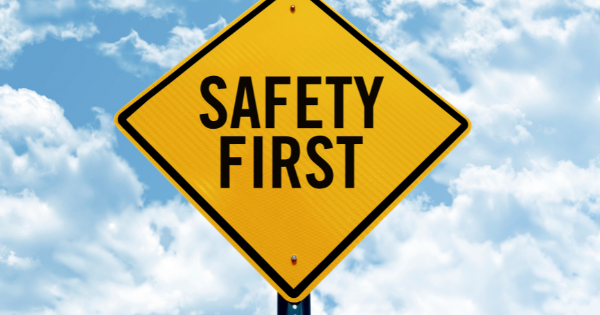This month was unusual for “The Huddle,” an AAPA social network, as it focused on a legal, not a medical term. Great moments begin with small steps and the author of the initial post can be content that he caught the attention of elite PAs as well as those who have entered clinical practice in the past five years.
Long time PA, Ed Matthes from NY, discussed standard of care being lower for a PA than physicians, while having coffee with a physician. Defending the role of PAs, Ed has given expert witness for both the plaintiff and defense and opined that he has held the PA to the same standard of care as physicians. Apparently, all of the legal literature agrees. Stuart Reich PA-C, who owns a medical legal company besides being a practicing PA, was 100% in agreement with Ed. He states: “It is the same standard of care that all of us have to be guided by. Gerald Kayunga, Ph.D., MBA, PA-C, DFAAPA suggested that the physicians read a recent paper comparing MD to PA to NP malpractice in the Journal of Healthcare Management by Mayer et al 2020 https: onlinelibrary.wiley.com/doi/epdf/10.1002/jrm2142.
When we make the decision to study, certify and get our license, we are making a decision to treat the patient with the public trust of our qualifications. When in Emergency Medicine, IM, Family Practice or Urgent Care and Telemedicine, we will encounter the same patients. It may be an asthmatic and we need to decide whether it is intrinsic, allergic, seasonal, occupational, exercise induced, difficult to control or severe brittle. The last group can be easily misdiagnosed. If the SOC is not met in ascertaining a good history and looking for vital clues, then this patient will have a respiratory arrest and die. There are also variables on headache but a DO NOT Miss Headache is a SAH. Once again, if not diagnosed, scanned and treated immediately, this patient can die. I had a patient who was scheduled for an elective procedure who pre-paid and did not appear on the day of surgery. We could not contact her, but six weeks later her estate attorney contacted us and explained that she was horseback riding in the mountains, came back to her lodge with a headache and was found dead on the bathroom floor 36 hours later. An SAH is a sudden, thunderclap headache that is commonly referred as ‘the worst headache I have ever had.” All clinicians have the same standard of care to recognize the symptoms.
The definition of SOC is appropriate from a legal encyclopedia. It is a type of care that a reasonably competent and skilled HCP with a similar background and in the same medical community would have provided under the circumstances that led to the alleged malpractice. Different states define it in slightly different ways. A medical malpractice case can be based on the answer to a specific type of question, whether or not the provider’s conduct resulted in medical negligence. It is what they did or failed to do. “It is determined by a given set of circumstances that present in a particular patient, with a specific condition, at a definite time and place. In other words, standard of care is sensitive to time, place and person.” www.law.cornell.edu
What factors can affect SOC as we care for our patients today?
Working in a practice that demands that the clinician see a new patient every seven to ten minutes. The rush without time to digest all of the information. The intrusions whether by secretaries or phone calls from other HCPs or pharmacies. Working too many hours or too many shifts where the provider is not as alert or able to commit to multiple differential diagnosis. Perhaps lack of experience in this specialty, not enough hands on experience, or the fact that the provider may be a recent graduate and has not accumulated a sufficient amount of knowledge. The letters after your name and the degrees you hold cannot change these situations. The only way to move a mountain is one rock at a time.
What is expected of a PA or NP in regards to a standard of care?
- Refer to a specialist when you are uncertain as to the best care of your patient.
- Order the appropriate labs and radiographs and analyze the results and get back to your patient.
- Create an appropriate treatment plan and prevention counsel.
- When you prescribe a medication, be aware of the side effects and contraindications and, most importantly, your patient’s current medications.
- Record a good, current medical history.
- Perform basic medical exams and do not check off exams on an EMR that you have not done—this is fraud.
- Purchase the best malpractice policy that is available and that is endorsed by your national association.
These suggestions are not conclusive, but will serve as a springboard to superior patient care, which your programs have taught when saying PAs are held to a higher standard. We are not Hebrew National frankfurters, but we strive to have the best standards available today and I believe that we can accomplish this mission.
In conclusion, we never know when a process server is going to knock on our door or when we are going to get a blue subpoena. The feeling is like going down on a deep slope of a roller coaster. The psychological pain is sometimes unbearable, which is why some HCPs commit suicide. We are told by our attorney that we cannot speak of the case to anyone. When you find yourself in this desert, the most important foundation is a strong malpractice policy. Your professional organization has already done the groundwork for you so choose their endorsed carrier.
By Robert M. Blumm, PA, DFAAPA, PA-C Emeritus
PA Advisor to CM&F



